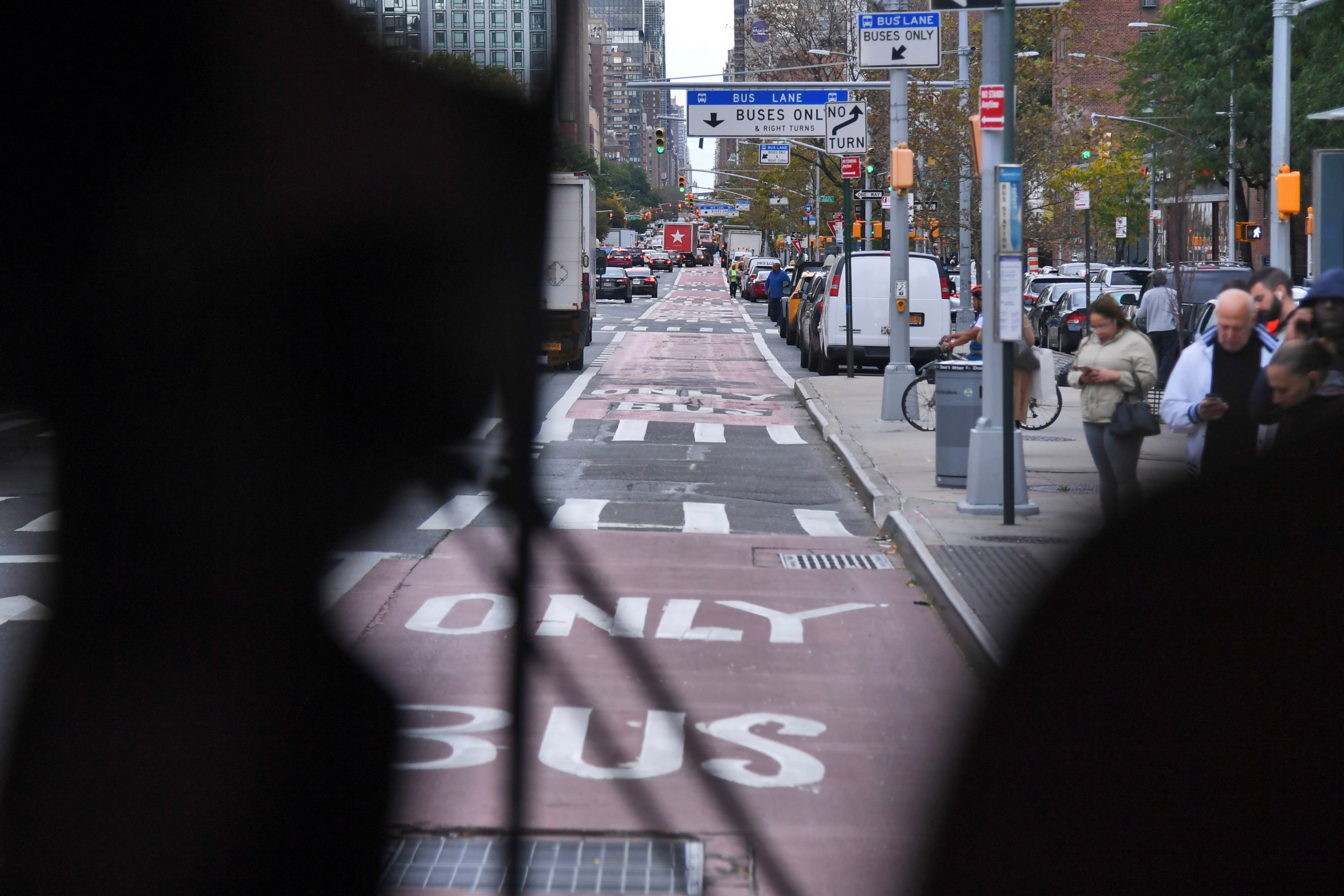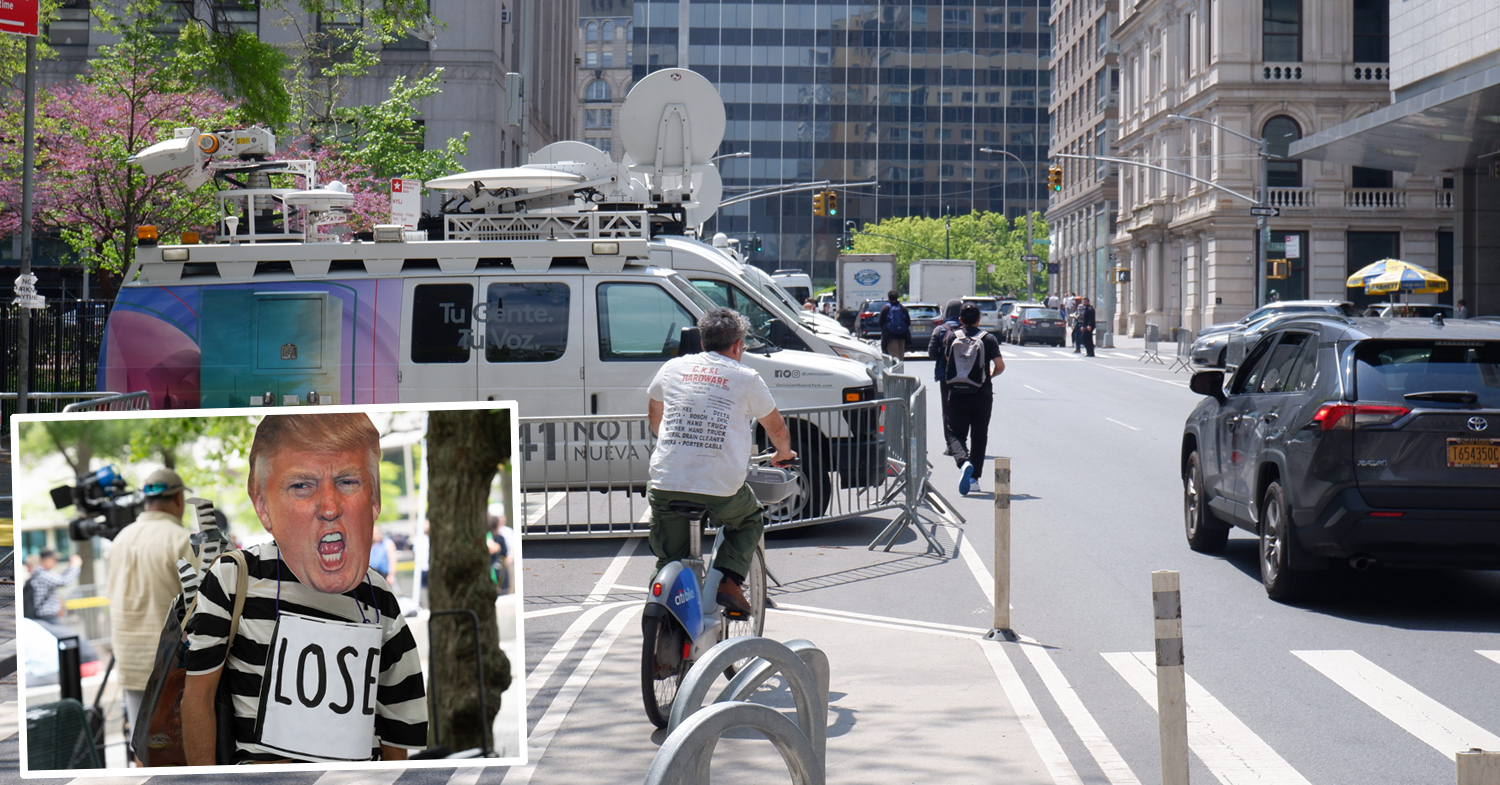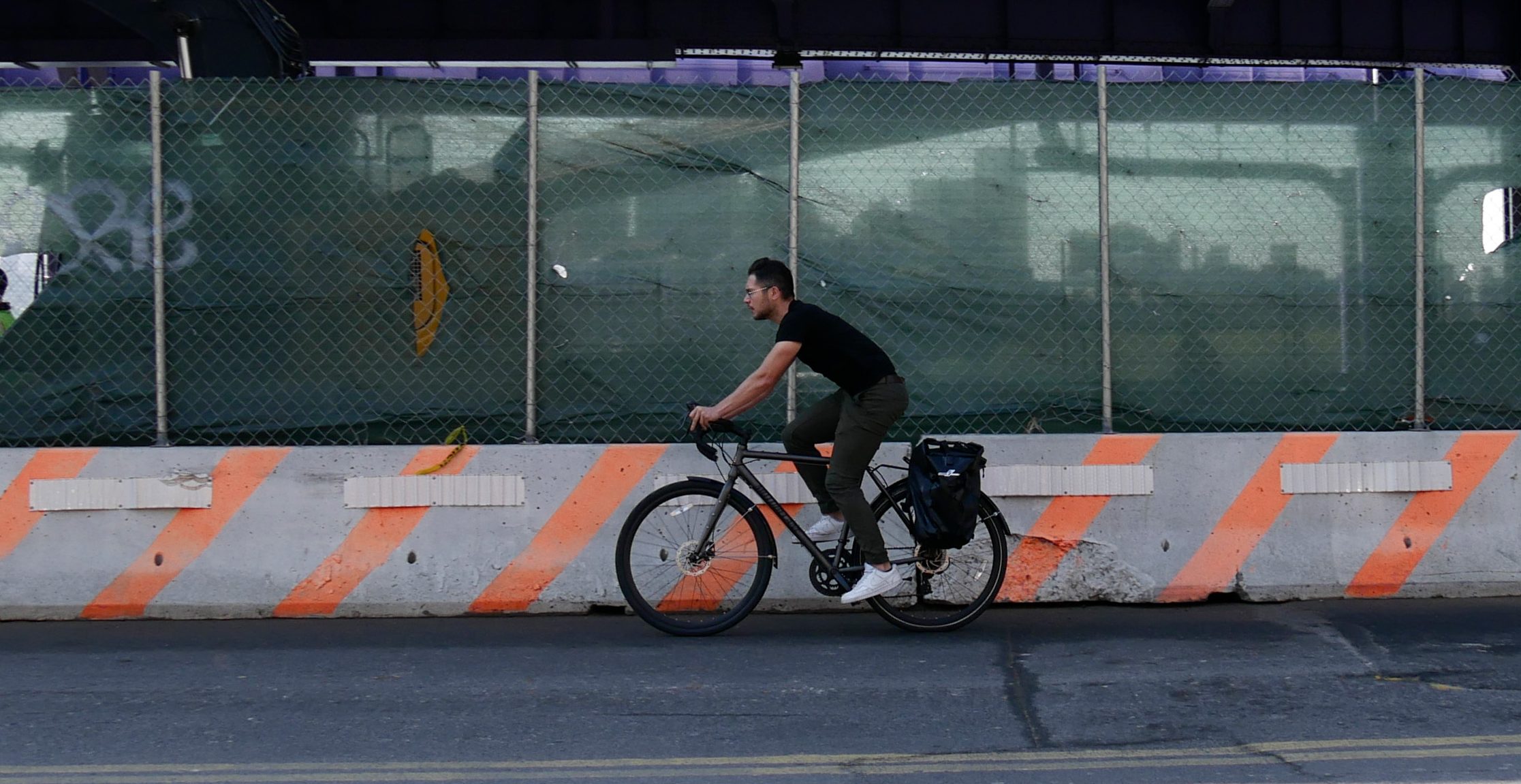The Bogotá Transformation: Vision and Political Will
11:47 AM EDT on October 29, 2007
Last week's saga of MTA workers seizing bicycles locked to a subway stair railing in Brooklyn illustrated, yet again, just how far New York City has to go towards making bicycles an integral part of the city's transportation system. As Larry Littlefield aptly commented, "The MTA doesn't see bikes as an extension of the transit system. It's a new concept here."
Indeed, it is a new concept for New York City. And if one has never seen a city where it's done well, the idea of bicycles functioning as an extension of a transit system may be somewhat unimaginable.
I saw some great examples of a bike-oriented transit system just a few weeks ago during a trip to Bogotá, Colombia. I was there with StreetFilms' Clarence Eckerson, Transportation Alternatives' Karla Quintero and Project for Public Spaces' Ethan Kent. The New York City Streets Renaissance team was taken around the city by Gil Peñalosa, Bogotá's former Parks Commissioner and brother of former Mayor (and current mayoral candidate) Enrique Peñalosa and Eduardo Plata of the Fundación Por el País Que Queremos, otherwise known as The Foundation for the Country That We Care About.
(Update: Enrique lost the election to a far-left candidate promising an impossibly expensive subway system for Bogotá).
As a part of our tour, Gil took us to the Portal de las Américas, a major terminal of the TransMilenio bus system in the southwestern corner of the city. There, in the ground floor of the bus terminal, Gil showed us a bike parking facility unlike anything we have in New York and easily as nice as anything one might find in the most bike-friendly cities of Northern Europe.

With a ticket-taker, security guard and space for somewhere around 700 bikes it was, without question, the finest Cicloparqueadero any of us had ever seen (Granted, it was also the only Cicloparqueadero we'd ever seen).

New York City transportation advocates, I think, are accustomed to being told in contradictory fashion, that our various transportation agencies are either too focused on mega-projects to pay attention to something this small or too cash-strapped to do something this big. So, we immediately wanted to know how this project came about and how much it cost to build and run. Gil didn't have the numbers at his fingertips, but as a part of the mayoral administration that conceived and launched TransMilenio, he was able to explain the thinking behind it.
"For every 25 people who ride bikes to the terminal," Gil said, "That is one less 'feeder bus' we need to run through the neighborhoods. You do the math and pretty quickly you see it makes financial sense to set aside some space and hire a security guard to help people to ride their bikes."

Most of the TransMilenio system consists of these double-long red buses running along a four-lane, dedicated rights-of-way down the middle of major avenues and highways.

With no private motor vehicle traffic in their way and various other technological and design advantages, TransMilenio buses mostly run fast and according to schedule. Crosstown travel times on one major north-south route on the eastern edge of town dropped from 3 hours to 55 minutes once TransMilenio was up and running, officials told us. With wide doors, elevated platforms and passengers paying fares before they board, I finally understood why some people refer to TransMilenio as "surface subway."

TransMilenio also runs smaller green "feeder" buses like the one below. The green buses wend their way through neighborhood streets, picking up passengers and delivering them to major stations and terminals. A ride on a feeder bus is free, which is part of the reason why officials are eager to encourage bicycling to the bus terminals and major stations by funding a secure bike parking facility.

On our way to the Cicloparqueadero at Portal de las Américas, Peñalosa took us on a bike tour of one of the poorer sections of the city. We traveled through a neighborhood of unpaved roads overhung by jerry-rigged electrical wiring and surrounded, in spots, by open sewers. We rode past block after block of half-built cinder block housing covered with corrugated aluminum roofing. This was the scene I saw to my right.

To my left, there were cows grazing in an open drainage ditch. We were not talking about a particularly wealthy part of town.

Yet, in front of me, running right down the middle of this very same neighborhood was one of the finest bicycle and pedestrian paths I'd ever seen. It was as nicely designed and -- at 8am on a weekday -- as heavily used as any facility one might find in Denmark, Holland or Germany.

Gil explained that when Enrique was elected Mayor of Bogotá he scrapped plans to build a new network of elevated highways throughout the city. For just a fraction of the cost of the proposed highway system and in a much faster time frame, Peñalosa built TransMilenio and installed bicycle "arterials" down the middle of neighborhoods like the one above. Along these bikeways they built new schools, parks and connections to the rest of the city via TransMilenio.
How is it, we asked, that a city with about one-tenth the per capita income of New York was able to build one of sleekest, most efficient and high-tech surface transportation systems in the world? "It's not about the money," Gil told us again and again. "It's about the vision and it's about political will. The politicians can always find the money."
Photos: Aaron Naparstek, September 17, 2007
Stay in touch
Sign up for our free newsletter
More from Streetsblog New York City
Good Luck Docking Your Citi Bike In Lower Manhattan
Many frustrated commuters to Lower Manhattan opted to simply abandon their Citi Bikes undocked due to the lack of open spots in the area.
Wednesday’s Headlines: ‘ACE’ in the Hole Edition
The MTA approved a $141 million contract to put hundreds of new automated traffic enforcement cameras on buses. Plus more news.
Trump Trial Street Closures Push Pedestrians, Cyclists into Busy Traffic
News vans have dangerously blocked the sidewalk and bike lane on Lafayette Street daily since Donald Trump's trial began nearby two weeks ago.
Eyes On The Street: Coastal Resiliency Causes Mess For Pedestrians and Cyclists
Unfortunately for cyclists and pedestrians, this situation won't be fixed until "at least 2026.”
State Pols Still Haven’t Spent Millions Alloted for Transit as Congestion Pricing Looms
There's like $45 million sitting there — unspent — for outer borough transit improvements. What are state pols waiting for?




